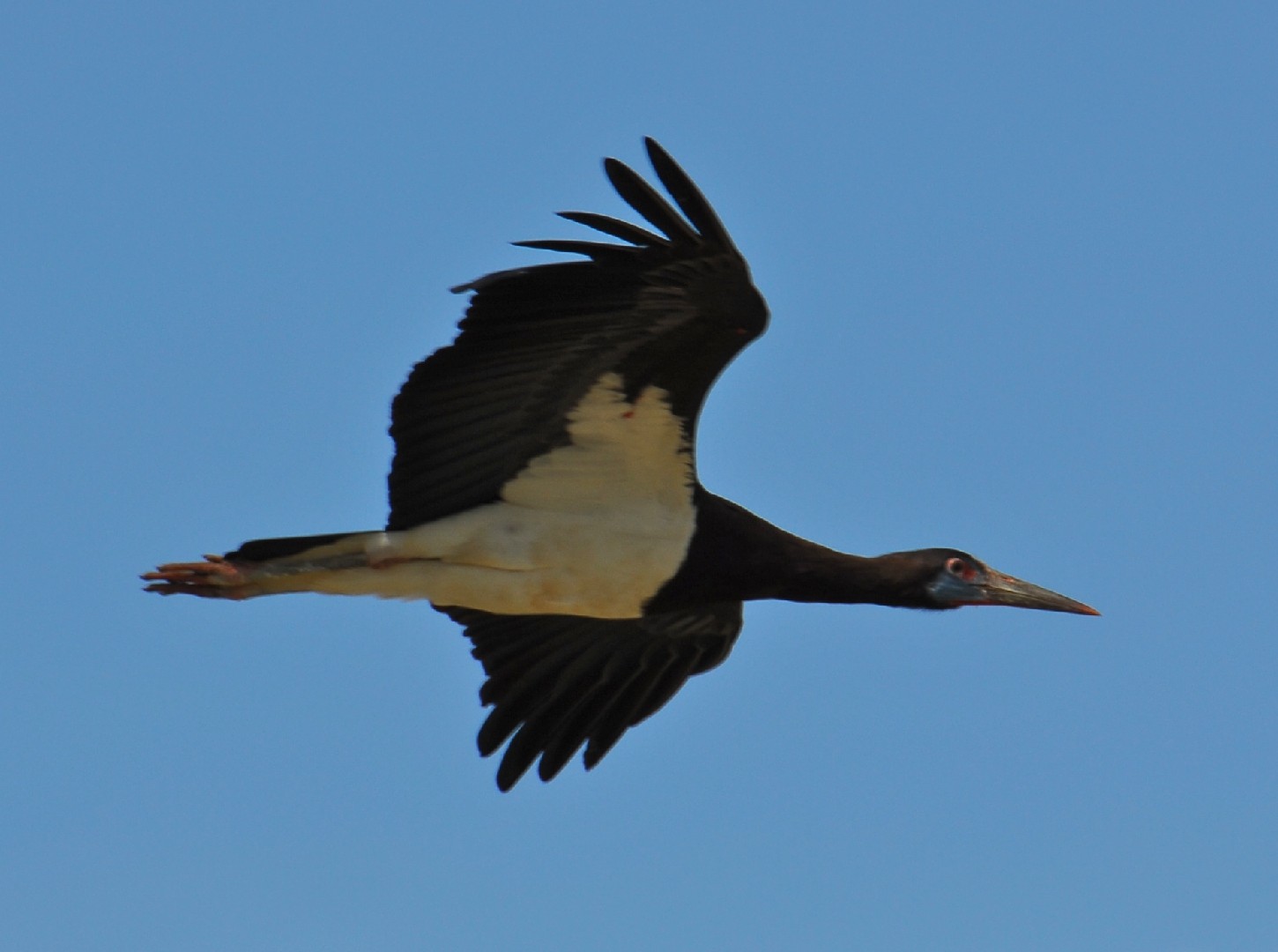Abdim's Stork
A species of Typical Storks Scientific name : Ciconia abdimii Genus : Typical Storks
Abdim's Stork, A species of Typical Storks
Botanical name: Ciconia abdimii
Genus: Typical Storks
Content
Description General Info
Description
Ciconia abdimii is a black stork with grey legs, red knees and feet, grey bill and white underparts. It has red facial skin in front of the eye and blue skin near the bill in breeding season. It is the smallest species of stork, at 73 cm (29 in) and a weight of just over 1 kg (2.2 lbs). 
Size
81 cm
Nest Placement
Tree
Feeding Habits
Abdim's Stork predominantly feeds on large insects like locusts and caterpillars, occasionally consuming small mammals and amphibians. Abdim's Stork forages in flocks, targeting swarms or fire-disturbed areas, quickly gorging on available prey, and exhibits flexibility in diet based on seasonal availability.
Habitat
Abdim's Stork thrive in East Africa's open grasslands, semi-desert regions, and cultivated fields. They favor areas near water, such as marshes and pools, and roost in trees or on cliffs. During migration, they are drawn to expansive grassy terrains, including manmade ones. Their adaptability allows for coexistence with human populations in certain villages.
Dite type
Carnivorous
General Info
Feeding Habits
Bird food type
Distribution Area
The Abdim's stork is found in open habitats throughout Eastern Africa, from Ethiopia south to South Africa. This stork has escaped or been deliberately released in to Florida, USA, but there is no evidence that the population is breeding and may only persist due to continuing releases or escapes.[1] Widespread and common throughout its large range, the Abdim's stork is evaluated as Least Concern on the IUCN Red List of Threatened Species. It is the subject of several nationally coordinated breeding programs: in the United States, the plan for this species is administered by the Association of Zoos and Aquariums and in Europe by the European Association of Zoos and Aquaria. 
Species Status
Not globally threatened.
